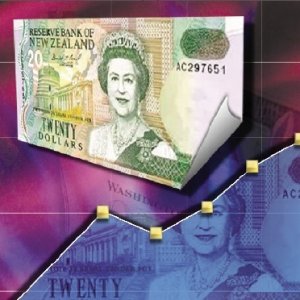Since then lows of 39 cents were reached in October 2000 and in August 2011 highs above 88 cents were recorded. As an exporter you can't help but be aware of the Kiwi's penchant for volatile trade and it is only natural you may be left wondering exactly what influences the value of the local dollar. Without attempting to simplify the complexities of foreign exchange into a single article, a few of the major drivers are outlined in the paragraphs to follow.
The first driver we wish to mention is commodity prices. Although the media frequently reports on gold, oil and copper prices (examples of hard commodities), a commodity price index will also comprise of soft commodities, or 'commodities that are grown'. With agriculture being the largest sector of New Zealand's tradable economy a strong positive correlation exists between commodity indices and the strength of the Kiwi; so much so that it is often referred to as a 'commodity currency'. For example in 2010 exports totalled NZ$40.6 billion (New Zealand Trade and Enterprise – NZ-Trade-data-2010.xls) with agriculture making up more than half; if you look at the Agricultural Raw Materials Index a 12-month high was reached in April this year, around the same time Kiwi rallied above 80 cents for only the second time since 1985.
Another notable characteristic of the Kiwi is the rate of interest it pays the beholder. At a time when many central banks are holding their cash rates near 0-0.5% the Reserve Bank of New Zealand holds at 2.5%. Second only to the Australian Dollar, demand for higher yielding major currencies generates significant buying interest for the Kiwi and thus any talk of increasing interest rates can send the Kiwi soaring.
These first two points direct us to the most influential of the NZ Dollar's traits over the last few years; its status as a 'risky asset'. Due to its correlation with commodity prices, which boom in times of global growth, and its high yielding status which equates to a higher level of risk, the Kiwi's value is strongly influenced by global market sentiment towards risky assets, known as 'risk appetite'. As we have witnessed recently with the ongoing European Debt Crisis, the Kiwi rallies strongly on positive news. This is called a 'risk-on' environment where investors rush to buy higher yielding assets or those highly correlated to commodities. On the contrary, when doubt resurfaces as to whether or not Europe will be able to contain its debt and the threat of a global economic slowdown rears its head, the New Zealand Dollar has a tendency to tumble in a 'risk-off' environment.
Such characteristics can often lead to high levels of volatility, leaving companies involved in foreign trade exposed to high levels of market risk. As uncertainty in the Euro-Zone looks set to continue for some time, both importers and exporters are quickly turning to professionals who can assist by developing tailored hedging strategies aimed at minimising the impact FX risk can have on the bottom line.
This email address is being protected from spambots. You need JavaScript enabled to view it.










